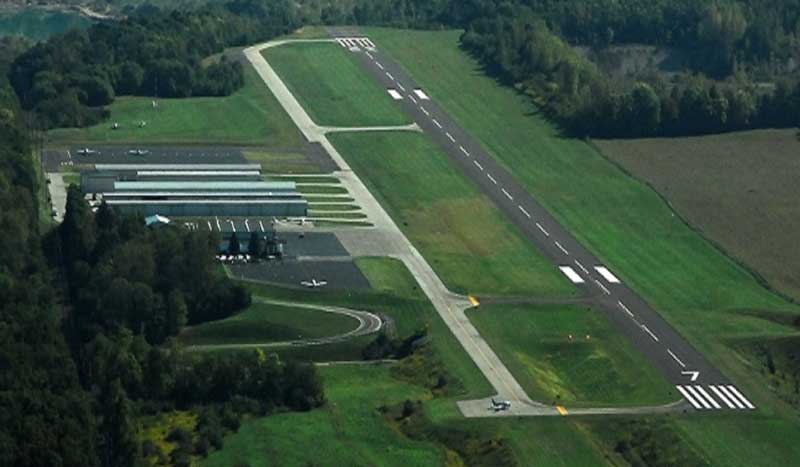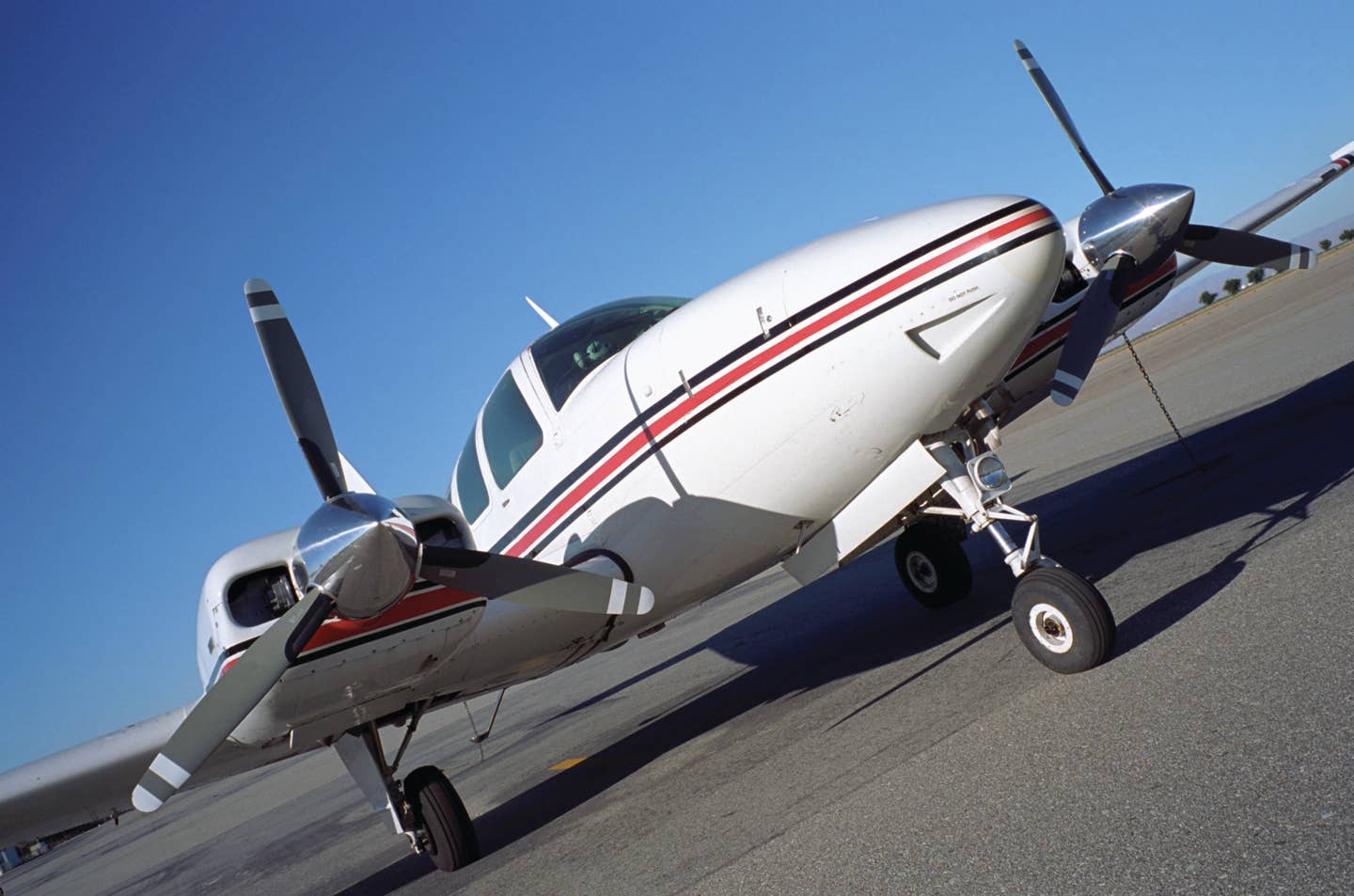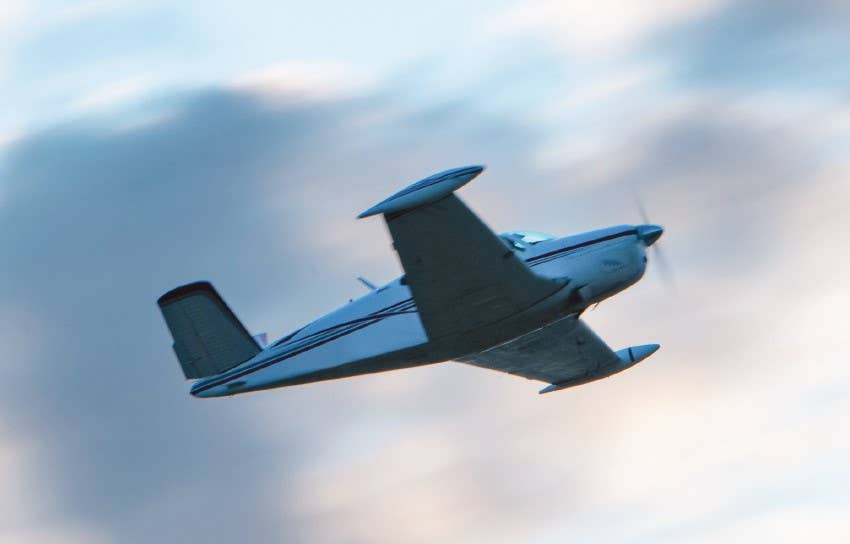A Skilled Pilot, a Routine Approach, an Unexpected Catastrophe
We know that his airplane stalled, but why it stalled is still a mystery.

Greene County Regional Airport in Ohio
[Courtesy: Greene County, Ohio]On a freezing January evening in 2016, a Cirrus SR22T approached Greene County Regional Airport (I19) near Dayton, Ohio, its home field, after a 100 nm IFR hop from Indianapolis.
Conditions at the airport were VMC, with a 1,700-foot ceiling, 10-mile visibility and a 9-knot wind gusting to 14 and varying from 240 to 330 degrees. The sun had just set, and the temperature on the ground was 32 degrees Fahrenheit.
The 2,000-hour airline transport pilot, 33, descended from his cruising altitude of 9,000 feet and used the GPS approach for Runway 7, intending to circle to Runway 25. Passing through 4,000 feet, he switched on the anti-icing system, which on the Cirrus consists of a porous metal leading edge from which an ethylene glycol fluid with a low freezing point, called TKS, bleeds onto the wing surface. Six miles from the airport, in the clear just below the clouds, he canceled IFR and switched anti-ice off. Passing the final approach fix, he slowed, selected half flaps and began a descent.
The Cirrus entered a left downwind leg for Runway 25. Witnesses mentioned that it appeared unusually low and unusually close to the runway. It turned base, then final. The wings leveled only briefly between turns. On the base to final turn, the Cirrus stalled and spun, crashing 100 yards from the runway threshold and killing the pilot.
The airplane was equipped with a data-logging device. It showed that in the seconds preceding the loss of control, the angle of bank approached 50 degrees and the indicated airspeed was between 87 and 90 knots.
The National Transportation Safety Board noted that, according to the airplane handbook, at 60 degrees of bank the stall speed with half flaps was 95 knots, and could have been even higher had any ice been present on the wings. It attributed the accident to “the pilot’s failure to maintain adequate airspeed while turning from the base leg to final, which resulted in the wing’s critical angle of attack being exceeded and a subsequent aerodynamic stall.”
It is difficult to know the precise stalling speeds of particular aircraft, but we can assume that the full-flaps stall speed of the SR22T at gross weight is no more than 61 knots. This airplane was not at gross weight, however; it was on a positioning flight, and therefore probably carrying no cargo, and the pilot had messaged ahead that he would be requiring 48 gallons of fuel. The actual weight of the airplane was likely around 3,100 pounds, so its full-flaps stall speed would have been 57 kcas. The stall would probably occur at around 63 kcas, or 65 kias, with half flap. The maximum angle of bank recorded did not exceed 50 degrees, which corresponds to a level-flight G-loading of 1.56 and a stalling speed of 81 kias. The NTSB’s mention of 95 knots is a mere rhetorical flourish, irrelevant to the accident.
In cases involving a spin out of a turn — a fairly common type of approach-to-landing accident — the NTSB almost always alludes to the increase in stalling speed that occurs when an airplane is banked, but never mentions that it applies only when altitude is maintained. It is obvious when you perform a wingover turn, for instance, that you can put an airplane into a 90-degree bank and still not stall it. I’m not sure whether the problem is that the NTSB accident analysts don’t know this fact — which would be hard to believe — or that they merely feel that their analysis is more forceful if they omit to mention it.
In any case, the airplane did stall. Why?
The gusting wind could have been a factor. It was not very strong to begin with. Groundspeed and indicated airspeed tracked each other closely in the logged data, and the airplane would in any case have been turning into the wind. However, a sudden 14-knot gust from 330 degrees when the airplane was banked 50 degrees could conceivably have increased the wing’s angle of attack by a couple of degrees and caused it to stall. A gusty right crosswind is a little-recognized hazard on the base-to-final turn of a left-hand pattern.
From one of the witness statements included in the accident docket, some inferences can be drawn about the state of mind of the pilot. He had a busy schedule flying the Cirrus. According to the line supervisor at I19, who knew the pilot, “the goal for him” was to get back to I19 before the FBO closed, which was at 8 p.m. in summer and 6 p.m. in winter. The accident took place at precisely 6 p.m. It’s likely, therefore, that the pilot was trying to get down as expeditiously as possible. The facts that the airplane was low and close-in on the downwind leg — he had to turn right to widen out the approach before he turned left from downwind to base — and that the turn to final took place very close to the end of the runway are consistent with that theory.
It’s probable that, beginning from an unusually low downwind and having to make steeply banked turns because he had flown the downwind leg so close to the runway, the pilot found himself sinking and increased the angle of attack in the final turn to arrest his descent.
Ice remains a possible, but unknown, factor. The effect of ice on the stalling behavior of wings is difficult to predict, but it is well-known that very small amounts of ice can sometimes have disproportionately large effects. The pilot selected half flaps two and a half minutes before landing, but he did not begin to slow down until a minute later. He may have been in the habit of getting the airplane configured for landing well in advance of arriving at the runway — the essence of a “stabilized approach” and a staple of Cirrus standardized training — but it is also possible that he was concerned about ice and thought it would offer an extra margin of safety.
The fact that the pilot used anti-ice during his descent suggests that he saw some airframe icing; this would be consistent with the weather conditions and with pilot reports. That he turned off the TKS bleed upon emerging from the clouds is logical: In the clear, with no precipitation, no further icing would occur. It was unclear from witness accounts which wing stalled, although one witness stated categorically that the airplane rolled to the right. It is possible that the pilot turned off the TKS when the left wing appeared satisfactorily clean to him, and that he overlooked some residue on the right wing.
It’s often said that accidents arise from the combination of multiple factors that are harmless enough by themselves. Here you had a well-trained professional pilot, very familiar with his airplane, making a traffic-pattern approach to his home field in VMC. You could hardly imagine a less threatening situation. And yet it ended with an accident. To understand how that could happen, you cannot ignore all of the elements of the approach that were slightly unusual: that it was flown close in and low, that the banks were unusually steep, that the plane had been through icing conditions and that the pilot was most likely hurrying to get to the FBO. To this add the fact that the pilot was very familiar with and perhaps overly confident in the airplane, and you have a glimpse of how what should have been a completely ordinary maneuver could turn into a disaster.
This article was originally published by FLYING on March 7, 2018.

Sign-up for newsletters & special offers!
Get the latest FLYING stories & special offers delivered directly to your inbox






